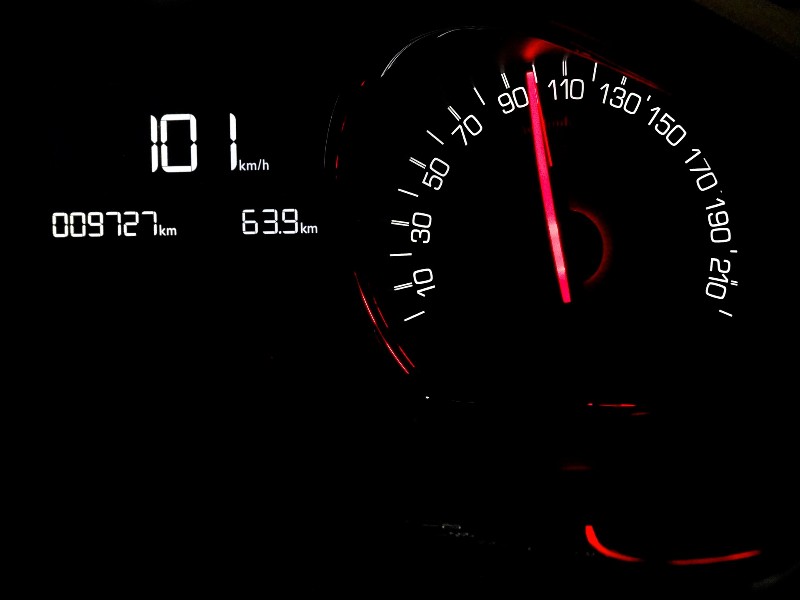Speedometers are one of the most important components in a vehicle as they let you know how fast you are moving. Everyone is familiar with the standard circular design of speedometers in vehicles.
But did you know there was a time when speedometers were horizontal and resembled a yardstick? And if you knew about the horizontal design, did you know what speedometers used to be designed that way? You’ll find the answers to those questions in this article.
Horizontal speedometers were popular in the 50s and 70s due to advancing technology and a desire to provide trendy and better-looking speedometers for that time period.
It may be surprising to think that horizontal speedometers were considered trendy at a time. But they were and you’ll find the reason behind that in the paragraph below. Continue reading to learn more about the thoughts behind horizontal speedometers.
History of Speedometers – Traveling Back In Time
It’s easy to think speedometers are new inventions with how modern and trendy they look in today’s vehicles. But speedometers were first patented in 1902 and have been a standard fitting in most vehicles as far back as 1910.
The first speedometers were similar to the ones you see today, at least design-wise as they have the same circular shape. A cable was connected to a magnet that has a balanced copper cup as well as a pointer. The magnetic field produced by the currents due to eddy currents moves the pointer depending on the speed the vehicle is traveling.
However, the circular shape of the speedometer will later give way to a horizontal design due to reasons that will be discussed below.
Why Do Some Old Cars Have Horizontal Speedometers?
Around the 50s and 70s, new vehicles were being fitted with horizontal speedometers instead of the usual circular speedometer. The main reason for this is due to improvement in technology as newer speedometers didn’t rely on magnetic fields to function.
It’s worth mentioning that the main reason behind the circular design of the first speedometers was the technology of the time. With the magnetic technology used back then, it made sense for speedometers to be circular. However, as technology advanced, it seemed kind of obsolete to still use the circular design.
Hence, manufacturers turned to horizontal design as it looked more stylish and trendy. But horizontal speedometers didn’t reign for long as the circular design was found to offer several benefits the horizontal models couldn’t deliver.
Benefits of Circular Speedometers
Circular speedometers were found to offer the same functionality as horizontal speedometers while offering extra benefits. One such benefit was how cleaner the instrument cluster or dashboard looked. With a horizontal speedometer, the dashboard looked more clustered.
Another benefit of circular speedometers is that they can show finer increments of speed with less space. For a horizontal speedometer to show finer increments in speed, a lot of space will be required. Also, it’s easier to look at and read circular speedometers since you just have to focus on a small area of your dashboard. With a horizontal one, the driver will need to scan a larger area of the dashboard.
So, the idea behind a horizontal speedometer was to ‘modernize’ the initial circular design of the speedometer as technology advanced. However, automobile manufacturers reverted to the initial design as it was found to have many advantages over the horizontal design.

Analog Vs Digital Speedometers
Some vehicles, especially those with electronic frameworks, come with digital speedometers which use a collection of chips and sensors to calculate vehicle speed. This is in contrast to analog speedometers that use a dial to tell you what you need to know about speed.
There’s an unending debate about which is better between analog and digital speedometers. We have the purists that insist you don’t fix what’s broken as analogue speedos work just fine. There are also futurists that want to embrace new technologies and see digital speedometers as the new trend. Regardless of the passionate argument, either party will come up with, both analog and digital speedometers have their pros and cons.
The main benefit of analog speedometers is how easy it is to track speed changes. After all, there’s a dial that physically moves left and right to show you the speed you are traveling at. However, the precision of analog speedometers is limited by parallax errors and motors in the gauges which may not spin fast enough in some cases.
Digital speedometers tend to be more accurate and offer the possibility for full customization. The layout can be made to suit the driver’s preferences or drive mode. However, it’s not easy to follow speed changes in a digital speedometer compared to an analogue. Constantly changing digital numbers can be more distracting than seeing a dial moving left and right.
At the end of the day, the one you go for depends on your preferences and purchasing power.
Why Do Speedometers Go As High As 140 or 160 mph, Even If Cars Can’t Go That Fast?
Unless you have a supercar such as a Hennessey Venom GT or Bugatti Chiron parked in your garage, chances are the car you own will go as fast as 140 or 160 mph, at least on the speedometer readings. But in reality, you’ll rarely exceed the 100 mph mark no matter how much you accelerate leaving the 120, 140, and in some cases, 160 mph marks unreachable territories. So if you ever wonder why this is so, you’ll find the answer below.
It must first be mentioned that automobile manufacturers design speedometers to fit a wide range of cars. So, a mid-performance vehicle and a high-performance vehicle can use the same speedometer. The only difference is that both cars will achieve different maximum speeds based on their performance.
Higher gauges can also make otherwise dull cars seem sporty. It’s a marketing move used by several carmakers to give the appeal of a powerful engine to people.
Some experts have also claimed there’s a psychological benefit to installing higher guards in cars. As people travel at speeds far away from the limit on the gauge, there’s the perception that they are driving safely.

